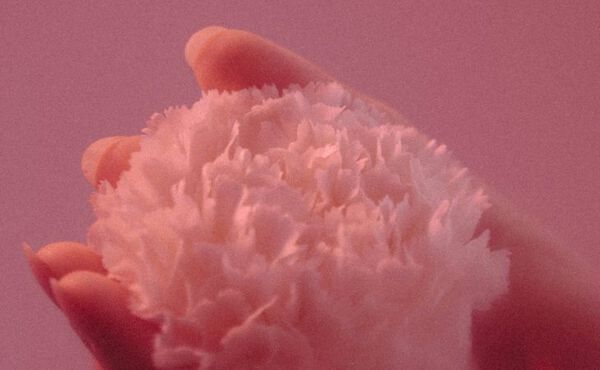From what to eat to the best way to exercise, experts share their top tips to boost your wellbeing throughout each stage of your menstrual cycle.
Each one of us is unique, and so how the menstrual cycle impacts our energy levels, moods, emotions and more will of course vary. But one thing many of us can likely agree on is this – periods, and all things related, can indeed be fickle. So, the more we understand about what’s actually happening within our bodies, the better. For example, did you know that there are actually four different phases of the menstrual cycle, each with their own potential impact on our wellbeing?
To help us break down each of these phases and what we should know, we’ve tapped experts in gynaecological health, fitness and nutrition, for a straight-forward guide to self-care at every stage. Let’s dive in.
UNDERSTANDING YOUR CYCLE
Our first point of discussion – those four phases of the menstrual cycle, and the importance of understanding what’s going on during the whole 28(ish)-days. We’ll delve deeper into each one shortly, but for now let’s put some names to phases.
- Menstrual phase
- Follicular phase
- Ovulatory phase
- Luteal phase
“It is so important to understand what happens during our normal ‘healthy’ cycle, in order for us to evaluate when changes may occur, what they can mean, and how to optimise any symptoms we may feel at certain points,” explains Dr. Amy Shacaluga, a consultant obstetrician and gynaecologist.
Integrative internist Dr. Sari Eitches agrees, noting the benefits of cycle syncing – the practice of adjusting routines to the phases of our cycle. “The key to cycle syncing is really learning the language of our body and listening to it, and eventually, building an intuitive anticipation of our fluctuating needs,” she explains.
So, let’s take a deeper look at each phase, and what we can do to optimise our wellbeing.
MENSTRUAL PHASE (DAYS 1-5)
What’s happening? As Dr. Shacaluga explains, our bodies experience a sharp decrease in the hormone progesterone at this stage, which triggers uterine contractions and the uterus lining to shed – aka our period arrives.
Be Mindful: Progesterone is linked to the production of GABA, this is a wellbeing neurotransmitter that helps promote sleep, enhances mood and helps you feel relaxed. Since it decreases during this phase, it is little wonder that during our period we don’t feel our best.
What to eat: “Lean red meat, spinach, and lentils will help to replenish iron lost during menstruation,” says registered nutritionist Caroline Farrell. “Fatty fish, flaxseeds and chia seeds can help reduce inflammation and ease menstrual cramps, while yoghurt with live cultures or fermented foods like sauerkraut can help with digestive symptoms.”
Move your body: “Gentle yoga, walking, or light cardio can help to alleviate cramps and boost your mood in this phase,” says personal trainer Mike Julom. “Stay hydrated as it’ll help with bloating and fatigue.”

FOLLICULAR PHASE (DAYS 1-13)
What’s happening? “The follicular phase is essentially getting the next egg ready, which interestingly overlaps with the start of your period,” explains Dr. Shacaluga. “Small egg follicles are being recruited in the ovary. They bring about a gradual hormone increase, which eventually prompts a surge in oestrogen once the dominant follicle is ready to ovulate.”
Be Mindful: “Increased oestrogen brings more energy,” says Farrell. This is because the rise in estradiol (the most potent form of oestrogen) has been linked to a rise in serotonin (known as the happy hormone) so during this time, especially later in the phase after your period has stopped, you will likely feel happy and energised. Towards the mid-point of this phase, around day 6 or 7, is the time to tick of that to-do list or get creative thinking about new ideas or plans.
What to eat: “Increased oestrogen brings more energy, so this is a good time to increase your protein, which helps build muscle during resistance exercise,” notes Farrell. Chicken, turkey, beef, lentils, chickpeas, black beans are all good sources.
Move your body: “This is a great time for high-intensity interval training (HIIT) or weight lifting. It's also a good time to try new or challenging workouts, because your pain tolerance and mood are elevated,” suggests Julom.
OVULATORY PHASE (DAY 14)
What’s happening? During the ovulatory phase, a surge in luteinizing hormone (LH) is triggered by rising oestrogen levels. This causes the dominant follicle to release its egg, ready for fertilisation. “Some women experience some pain during ovulation, it’s known as mittelschmerz syndrome,” explains Dr. Shacaluga.
Be Mindful: Every woman is different, we are complex beings after all and, since this phase is right in the middle of the cycle, some people find that they still feel great when ovulating, while others already start to notice the drop in energy and mood. Try to listen to your mind during this time and focus on what you need in the moment.
What to eat: “Nutrition is key throughout your cycle. Eat a rainbow, have balanced meals to avoid sugar spikes, and ensure protein, fibre and complex carbohydrates form part of your main meal,” says Dr. Shacaluga.
Move your body: “Continue with any high-intensity workouts but do be cautious as ligament laxity may increase during this phase, making you more prone to injuries,” advises Julom. “Socialising is often easier during this time, making group classes or team sports more enjoyable.”
LUTEAL PHASE (DAYS 15-28)
What to know: Once the follicle releases its egg, it transforms into a structure called the corpus luteum, and increases production of progesterone. This helps to keep the uterus lining thick for around 14 days. “The luteal phase tends to be the time we may feel less energetic, more bloated (a result of increased progesterone), lower libido and mood changes,” advises Dr. Shacaluga.
Be Mindful: If you find yourself feeling anxious or stressed before your period this is something that can happen due to the changes in hormones. Research found that there was higher levels of anxiety in response to stressors, including exercise, during this phase so try to take it easy if you can.
What to eat: “Eating smaller, regular meals will help to stabilise your blood sugar levels, support PMT symptoms and reduce cravings. Magnesium-rich foods such as almonds, spinach, and bananas may reduce bloating and cramping, while the calcium in dairy products or fortified plant milks can help to relieve mood swings,” says Farrell.
Move your body: “As progesterone rises you might feel more fatigued, so switch to moderate-intensity workouts, yoga, or Pilates,” says Julom. “Incorporate breathing exercises or meditation to help counter any PMS symptoms.”
GOOD TO KNOW
If you’re using birth control pills, it’s worth being aware that to be effective, they’re designed to temporarily alter the hormonal patterns of a typical cycle. So, you likely won’t experience quite as many hormonal fluctuations. Perimenopause can affect this too, which is where tracking and awareness are useful. “Perimenopausal symptoms vary and can start years before the menopause,” explains Dr. Shacaluga. “By learning about what our normal cycles should look and feel like, we’re better able to identify when they start to change.” If you have any concerns about your cycle, it’s always a good idea to speak to a registered GP or healthcare specialist.
-
Skatīt visu€ 37,90







.jpg?sw=600&sh=370&sm=fit&cx=0&cy=0&cw=600&ch=370&sfrm=jpg)
